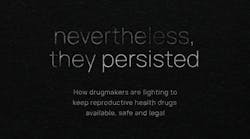Compared to spending on doctors and hospitals, prescription drug therapy is a bargain. Generic drugs are especially cheap, accounting for 88 percent of prescriptions filled but only 28 percent of expenditures. Within a year after a brand drug faces competition from generics, the average price falls 80 percent or more.
Intense competition usually holds generic drug prices in check. Oddly, during the past few years, many generic drugs that have been on the market for decades have suddenly become more expensive. The price of more than one-fourth of generic drugs rose 10 percent to 100 percent or more in 2014. In other cases, older generic drugs have become scarce and hard to procure. Some of the reasons for drug price increases fall within the supply chain — the path a drug follows from raw ingredients to the consumer.
In theory, generic drugs face unlimited competition, since any qualified drug maker can apply to the FDA to produce a generic version of the drug after its patent expires. The reality, however, is often far different. Due to industry consolidation — and an FDA that is slow to approve new entrants into the field — there are many generic drugs for which there are only two or three competing manufacturers. When only a handful of producers make a given drug, the opportunities for informal collusion increase.
The wholesale drug industry has undergone tremendous market consolidation in the past few decades. Today, three large firms control nearly 90 percent of the distribution of wholesale drugs, resulting in less price competition. Some drugstores also function as small-scale distributors that take advantage of scarcity by diverting drugs in short supply to the wholesale gray market. Most of the drugs used in hospitals must first pass through a GPO. These firms purchase supplies on behalf of numerous hospitals, thereby obtaining lower unit prices on bulk orders. Group purchasers that focus solely on price to the exclusion of having multiple sources of a drug can make the supply chain more fragile.
Many of the drugs rising sharply in price are older therapies approved decades ago. Many manufacturers have dropped them either due to low profitability or in favor of newer generics that are in higher demand. Though it is frequently the case that there are multiple manufacturers of a drug, there may be only one or two suppliers of the raw materials used by all producers. Estimates vary, but about 10 percent of drug shortages are thought to be related to raw material shortages.
Insurers and employers often hire Pharmacy Benefit Managers (PBMs) to administer drug plans and use a variety of techniques to control costs. PBMs encourage enrollees to use cost effective alternatives and negotiate with pharmacies and assemble preferred pharmacy networks to manage drug costs and mitigate the problem of rising prices. When price volatility affects local pharmacies, politicians often attempt to insulate drugstores and local constituents from the pain this causes. In the process, state lawmakers often make the situation worse. The following are some harmful regulations that policymakers should avoid:
• Banning Efficient Pharmacy Networks.
• Restricting Mail-Order Pharmacies.
• Restricting Maximum Allowable.
Generic drugs are inexpensive when there is competition, but less so when conditions on the supply-side of the generic drug market hamper competition. Market consolidation and long delays at the FDA in processing applications for generic drug manufacturers tend to raise generic drug prices for consumers. The FDA currently has a backlog of about 4,000 applications. In 2010 the median approval time for new generic drugs was 27 months. The FDA needs to clear the backlog and allow competition to flourish. This, in turn, will alleviate some of the price hikes caused by market consolidation in both drug manufacturing and distribution. Finally, states need to resist pleas from constituents to pass perverse regulations designed to protect local businesses (and pharmacies) at the expense of competition.
Editor’s note: This Executive Summary of NCPA’s Policy Report No. 371 has been edited. See the full report here: www.ncpa.org/pub/what-is-increasing-the-cost-of-generic-drugs-part-i-the-supply-chain



